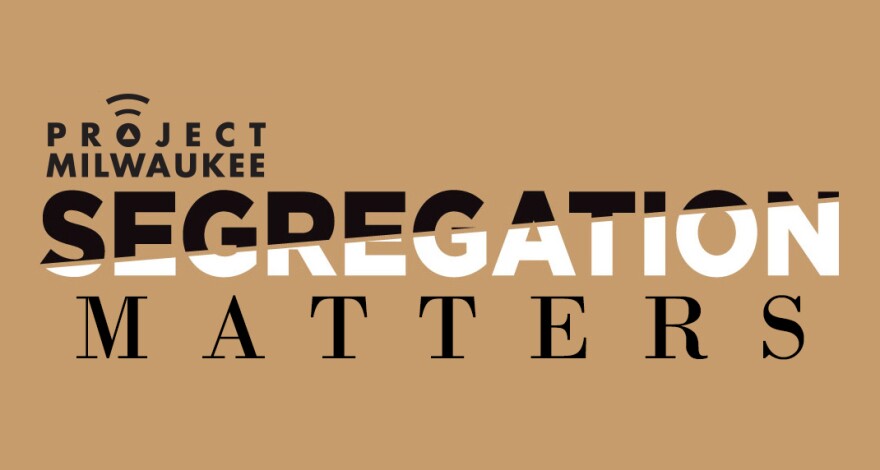The Milwaukee metro area has a reputation as one of the most segregated in the United States. A number of studies support that reputation. Yet what's talked about less are the reasons the community is so divided, and the consequences.
WUWM is tackling the subject in the series, Project Milwaukee: Segregation Matters. News reports and Lake Effect interviews will address numerous aspects of segregation here, including why it persists and whether there are ways to blur the barriers that separate many black and white residents.
The idea for the series came, in part, from listeners. For about a year, they've been submitting questions about the Milwaukee area for WUWM's Bubbler Talk series. Many of the inquiries have been lighter in tone. But the most common question has been a version of this one, from Wauwatosa resident Ken Schellin: "How did we become so segregated? I understand we're among the most segregated big cities in the U.S."
Ken says he wasn't just curious about metro Milwaukee's reputation, he also wanted to understand the dynamics at play:
"When I hear we're the 'most segregated' city, I just wonder what that means. Does that mean just geographically, we all live mostly with people mostly like us? Or is it economically? I wanted to kind of unpack the data and understand what that it means when I hear that phrase, 'most segregated.'"
As Ken's questions suggest, there's a lot to this subject. WUWM turned to UW-Milwaukee professor Marc Levine for facts and figures. He's the founding director of UWM's Center for Economic Development, and has studied segregation extensively. Levine shared some numbers from his research:
"Ninety percent of the African American households in metropolitan Milwaukee live in the city of Milwaukee. That's a much higher percentage than in virtually any metropolitan area in the country. By contrast, only a little over 20 percent of the white households in metropolitan Milwaukee live in the city."
Project Milwaukee: Segregation Matters will dig into the numbers, the dividing lines, and how they developed. Reports also will ask whether there's something inherently wrong about living in areas with little diversity. One person who's thought about that question is David Pate, a professor in the Helen Bader School of Social Welfare at UWM. He says it's OK to want to live among family or friends, and people who share your culture -- but there's a catch:
"There's something about segregation that can be really good for people. But also it can be something that's really bad, because you just don't have the same opportunities."
Pate points out that segregated African American neighborhoods in Milwaukee tend to be the city’s poorest, and that can make it hard for residents to get ahead. Jobs and networking opportunities can be scarce, and if people don't have cars, that can further limit the possibilities.
Pate adds that segregation also is a problem, if people can't live where they wish because they're unwelcome.
Others, such as the Rev. Joe Ellwanger, share concerns about stereotypes some people form, because they don't associate with those from another race. He marched alongside Dr. Martin Luther King, Jr. to end segregation in the south. Ellwanger says we still need to have difficult conversations about race relations today:
"There are people on the edges, white people specifically, who just literally will not come into the central city or even downtown Milwaukee because of their fears -- of what? That's what has to be unpacked. What are people really, really afraid of?"
Meanwhile, Ken Schellin -- the Wauwatosa man who asked us to explore segregation in Milwaukee -- wonders what the community at large might lose, because of those fears.
"The more people that grow up in the kind of insulated atmosphere like that, the less contact we're going to have among different groups, and all the good things that come from diversity -- we're missing out on all those things."
In addition to quantifying segregation here and measuring its impact, Project Milwaukee: Segregation Matters will examine solutions, including in a community forum. The event is a collaboration with Milwaukee Magazine, and is part of its monthly series of community conversations. The forum will be broadcast on Lake Effect at 10 a.m. on Friday March 10.
Have a question you'd like answered about segregation in the Milwaukee area? Submit your query below.
_



